NEW: Edible Flower Swap
Here is the Edible Flower Swap!
Flowers are affordable trend setters; they can be used in unexpected ways.
Flowers have held an eminent place in our art, religions, pharmacopoeia, and kitchens since ancient times. Tangled pea vines and primitive roses are depicted on Bronze Age artifacts. Mustard flowers were included in Roman love potions for their aphrodisiac powers.
The Renaissance cook did not confine flowers to vases. In the fourteenth century, peony roots were deemed a food fit exclusively for kings. Carnations and dianthus were so important that an entire book was written about them. Tansie, a type of sweet omelet, could be colored purple with violets or yellow with cowslips and marigolds.
The herbalist Gerard suggested in 1597 that "oregano is very good against the wambling of the stomacke." Daisies steeped in wine with sage and southernwood were considered a cure for insanity if the patient drank this mixture for fifteen days. In medieval times a bath of aromatic thyme was thought to cure hangovers and restore bravery and vigor to exhausted soldiers.
Flowers add romantic history to our food. They lend a charming, healthy, and unusual dimension to our tables. During Queen Victoria's reign there was a Primrose Day. A fanciful recipe for fairy cups called for a peck of flowers pounded with ladyfingers, three pints of cream, sixteen eggs and a little rosewater, buttered and baked with sugar on top.
Edible petals are easy to grow at home. They have become readily available at produce stores and farmers markets. Their flavors range from sweet to snappy and they compliment everything from artichokes to zabaglione.
In this swap we will be trading edible flowers. PLEASE SIGN UP! Sign ups will be until the 25th of February. And all mailers are due to me on the 10th of March!
NOW THE RULES
All seeds must produce edibles flowers.
All seeds must be clearly marked and packed correctly.
All seed packages should contain enough seed to try out that particular edible flower.
You will receive at least the amount of packages you send in most likely more..
You must send a wish list if your except to receive certain seeds back.
You must attach the correct amount of postage to the self addressed stamped bubble mailer or address labels and stamps to get the mailer back to you.
You must send your full name on the mailer , mailing address, garden web name and email address on a card or added to your lists.
A list of seeds you sent is recommenced. This helps so you dont get your own seeds back..
One person must not send in more than 5 copies of one certain seed.
One person must not send in more than 50 seed packages.
All mailers are due at my house by March 10th.
All mailers will be sent by March 20th.
Sorry for all the rules it just makes a better and more.
Side swaps are allowed. You can post what you have in the thread and others can claim your seeds. Then you can put the gardenweb name of the gardener requesting your seeds.
Remember ANYTHING that produce an edible flower is allowed including-
Angelica
Anise Hyssop
Apple
Arugula
Basil
Bee Balm
Borage
Burnet
Calendula
Carnation
Chamomile
Chicory
Chives
Chrysanthemum
Clover
Coriander
Cornflower
Dandelion
Day Lily
Dill
English Daisy
Fennel
Fuschia
Gardenia
Gladiolus
Hibiscus
Hollyhock
Honeysuckle
Hyssop
Impatiens
Jasmine
Johnny-Jump-Up
Lavendar
Lemon Blossom
Lemon Verbena
Lilac
Mallow
Marigold
Marjoram
Mint
Nasturium
Okra
Pansy
Pea
Pineapple Guava
Pineapple Sage
Primrose
Radish
Redbud
Rose
Rosemary
Runner Bean
Safflower
Scented Geranium
Snapdragon
Society Garlic
Squash Blossom
Sunflower
Thyme
Tuberous Begonia
Violet
Yucca
ALSO BE CAREFUL YOU EAT ONLY THE PARTS THAT ARE EDIBLE sometimes this is the leafs, sometimes the flower, sometimes the roots.
Alliums (leeks, chives, garlic, garlic chives) - Known as the "Flowering Onions." There are approximately four hundred species that includes the familiar onion, garlic, chives, ramps, and shallots. All members of this genus are edible. Their flavors range from mild onions and leeks right through to strong onion and garlic. All parts of the plants are edible. The flowers tend to have a stronger flavor than the leaves and the young developing seed-heads are even stronger. We eat the leaves and flowers mainly in salads. The leaves can also be cooked as a flavoring with other vegetables in soups, etc.
Chive Blossoms - Use whenever a light onion flavor and aroma is desired. Separate the florets and enjoy the mild, onion flavor in a variety of dishes.
Garlic Blossoms - The flowers can be white or pink, and the stems are flat instead of round. The flavor has a garlicky zing that brings out the flavor of your favorite food. Milder than the garlic bulb. Wonderful in salads.
Angelica - Depending on the variety, flower range from pale lavender-blue to deep rose. It has a flavor similar to licorice. Angelica is valued culinary from the seeds and stems, which are candied and used in liqueurs, to the young leaves and shoots, which can be added to a green salad. Because of its celery-like flavor, Angelica has a natural affinity with fish. The leaves have a stronger, clean taste and make a interesting addition to salads. In its native northern Europe, even the mature leaves are used, particularly by the Laplanders, as a natural fish preservative. Many people in the cold Northern regions such as Greenland, Siberia, and Finland consider Angelica a vegetable, and eat the stems raw, sometimes spread with butter. Young leaves can be made into a tea.
Anise Hyssop - Both flowers and leaves have a delicate anise or licorice flavor. Some people say the flavor reminds them of root beer. The blossoms make attractive plate garnishes and are often used in Chinese-style dishes
Apple Blossoms - Apple Blossoms have a delicate floral flavor and aroma. They are a nice accompaniment to fruit dishes and can easily be candied to use as a garnish. NOTE: Eat in moderation as the flowers may contain cyanide precursors. The seeds of the apple fruit and their wild relations are poisonous
Arugula - Also called garden rocket, roquette, rocket-salad, Oruga, Rocketsalad, rocket-gentle; Raukenkohl (German); rouquelle (French); rucola (Italian). An Italian green usually appreciated raw in salads or on sandwiches. The flowers are small, white with dark centers and can be used in the salad for a light piquant flavor. The flowers taste very similar to the leaves and range in color from white to yellowish with dark purple veins. Arugula resembles radish leaves in both appearance and taste. Leaves are compound and have a spicy, peppery flavor that starts mild in young leaves and intensifies as they mature.
Arugula Salad
Arugula, Pear and Asiago Cheese Salad
Walnut, Arugula & Gorgonzola Crostini
Aquatic Plants - Cattails have edible shoots and roots and even the pollen has been used in making biscuits. Arrowheads form large edible tubers at the root ends, called duck potatoes, which were consumed by Native Americans. Watercress (Rorippa nasturtium-aquaticum) has many historic medicinal uses and its spicy vegetation continues to be used in salads and garnishes. Water lily roots are a common source of food in many parts of the world especialy in Far East and have historic medicinal value.
Banana Blossoms - Also know as Banana Hearts. The flowers are a purple-maroon torpedo shaped growth appears out of the top of usually the largest of the trunks. Banana blossoms are used in Southeast Asian cuisines. The blossoms can be cooked or eaten raw. The tough covering is usually removed until you get to the almost white tender parts of the blossom. It should be sliced and let it sit in water until most of the sap are gone. If you eat it raw, make sure the blossom comes from a variety that isn't bitter. Most of the Southeast Asian varieties aren't bitter.
Basil - Depending on the type, the flowers are either bright white, pale pink, or a delicate lavender. The flavor of the flower is milder, but similar to the leaves of the same plant. Basil also has different varieties that have different milder flavors like lemon and mint. Sprinkle them over salad or pasta for a concentrated flavor and a spark of color that gives any dish a fresh, festive look.
Linguine with Tomatoes and Basil
Bee Balm - Also called Wild Bergamot, Wild Oswego Tea, Horsemint, Monarda. Wild bee balm tastes like oregano and mint. The taste of bee balm is reminiscent of citrus with soft mingling of lemon and orange. The red flowers have a minty flavor. Any place you use oregano, you can use bee balm blossoms. The leaves and flower petals can also be used in both fruit and regular salads. The leaves taste like the main ingredient in Earl Gray Tea and can be used as a substitute.
Borage - Has lovely cornflower blue star-shaped flowers. Blossoms have a cool, cucumber taste. Wonderful in punches, lemonade, gin and tonics, sorbets, chilled soups, cheese tortas, and dips.
Broccoli Florets - The top portion of broccoli is actually flower buds. Given time each will burst into a bright yellow flower, which is why they are called florets. Small yellow flowers have a mild spiciness (mild broccoli flavor), and are delicious in salads or in a stir-fry or steamer.
Burnet - The taste usually is likened to that of cucumbers, and burnet can be used interchangeably with borage.
Calendula - Also called Marigolds. A wonderful edible flower. Flavors range from spicy to bitter, tangy to peppery. Their sharp taste resembles saffron (also known as Poor ManÂs Saffron). Has pretty petals in golden-orange hues. Sprinkle them on soups, pasta or rice dishes, herb butters, and salads. Petals add a yellow tint to soups, spreads, and scrambled eggs.
Carnations - Steep in wine, candy, or use as cake decoration. To use the surprisingly sweet petals in desserts, cut them away from the bitter white base of the flower. Dianthus are the miniature member of the carnation family with light clove-like or nutmeg scent. Petals add color to salads or aspics. Carnation petals are one of secret ingredients that has been used to make Chartreuse, a French liqueur, since the 17th century.
Chamomile - The flowers are small and daisy-like and have a sweet, apple-like flavor. NOTE: Drink chamomile tea in moderation as it contains thuaone; ragweed sufferers may be allergic to chamomile.
Chervil - Chervil flowers are delicate white flowers with an anise flavor. Chervil's flavor is lost very easily, either by drying the herb, or too much heat. That is why it should be added at the end of cooking or sprinkled on in its fresh, raw state
Chicory - Earthy flavor, eat either the petals or the buds. Chicory has a pleasant, mild-bitter taste that has been compared to endive. The buds can be pickled.
Chrysanthemums - Tangy, slightly bitter, ranging in colors from red, white, yellow and orange. They range in taste from faint peppery to mild cauliflower. They sould be blanched first and then scatter the petals on a salad. The leaves can also be used to flavor vinegar. Always remove the bitter flower base and use petals only. Young leaves and stems of the Crown Daisy, also known as Chop Suey Greens or Shingiku in Japan, are widely used in oriental stir-fries and as salad seasoning.
Cilantro/Coriander - Like the leaves and seeds, the flowers have a strong herbal flavor. Use leaves and flowers raw as the flavor fades quickly when cooked. Sprinkle to taste on salads, bean dishes, and cold vegetable dishes.
Citrus blossoms (orange, lemon, lime, grapefruit, kumquat) - Use highly scented waxy petals sparingly. Distilled orange flower water is characteristic of Middle Eastern pastries and beverages. Citrus flavor and lemony.
Clover - Sweet, anise-like, licorice.
Cornflower - Also called BachelorÂs button. They have a slightly sweet to spicy, clove-like flavor. Bloom is a natural food dye. More commonly used as garnish.
Dame's Rocket> (Hesperis matronalis) - Also called Sweet Rocket or Dame's Violet. This plant is often mistaken for Phlox. Phlox has five petals, Dame's Rocket has just four. The flowers, which resemble phlox, are deep lavender, and sometimes pink to white. The plant is part of the mustard family, which also includes radishes, broccoli, cabbage, cauliflower, and, mustard. The plant and flowers are edible, but fairly bitter. The flowers are attractive added to green salads. The young leaves can also be added to your salad greens (for culinary purposes, the leaves should be picked before the plant flowers). The seed can also be sprouted and added to salads.NOTE: It is not the same variety as the herb commonly called Rocket, which is used as a green in salads.
Dandelions - Member of Daisy family. Flowers are sweetest when picked young, and just before eating. They have a sweet, honey-like flavor. Mature flowers are bitter. Dandelion buds are tastier than the flowers: best to pick these when they are very close to the ground, tightly bunched in the center, and about the size of a small gumball. Good raw or steamed. Also made into wine. Young leaves taste good steamed, or tossed in salads. When serving a rice dish use dandelion petals like confetti over the rice.
Day Lilies - Slightly sweet with a mild vegetable flavor, like sweet lettuce or melon. Their flavor is a combination of asparagus and zucchini. Chewable consistency. Some people think that different colored blossoms have different flavors. To use the surprisingly sweet petals in desserts, cut them away from the bitter white base of the flower. Also great to stuff like squash blossoms. Flowers look beautiful on composed salad platters or crowning a frosted cake. Sprinkle the large petals in a spring salad. In the spring, gather shoots two or three inches tall and use as a substitute for asparagus. NOTE: Many Lilies contain alkaloids and are NOT edible. Day Lilies may act as a diuretic or laxative; eat in moderation
Dill - Tangy; like leaves but stronger. Use yellow dill flowers as you would the herb itself - to season hot or cold soups, seafood, dressings or dips. Seeds used in pickling and baking.
Elderberry - The blossoms are a creamy color and have a sweet scent and sweet taste. When harvesting elderberry flowers, do not wash them as that removes much of the fragrance and flavor. Instead check them carefully for insects. The fruit is used to make wine. The flowers, leaves, berries, bark and roots have all been used in traditional folk medicine for centuries. NOTE: All other parts of this plant, except the berries, are mildly toxic! They contain a bitter alkaloid and glycoside that may change into cyanide. The cooked ripe berries of the edible elders are harmless. Eating uncooked berries may cause nausea, vomiting, and diarrhea.
English Daisy - The flowers have a mildly bitter taste and are most commonly used for their looks than their flavor. The petals are used as a garnish and in salads.
Fennel - Lovely, star-burst yellow flowers have a mile anise flavor. Use with desserts or cold soups, or as a garnish with entrees.
Fuchsia - Blooms have a slightly acidic flavor. Explosive colors and graceful shape make it ideal as garnish. The berries are also edible.
Garden Sorrel - Sorrel flowers are tart, lemon tasting. So use like a lemon: on pizza, a salad topping, in sauces, over cucumber salads.
Gladiolus - Flowers (anthers removed) have a nondescript flavor (taste vaguely like lettuce) but make lovely receptacles for sweet or savory spreads or mousses. Toss individual petals in salads.
Hibiscus - Cranberry-like flavor with citrus overtones. Use slightly acidic petals sparingly in salads or as garnish.
Hollyhock - Very bland tasting flavor.
Honeysuckle - Sweet honey flavor. Only the flowers are edible. Berries are highly poisonous - Do not eat them!
Hyacinth - Only the Wild Hyacinth (Brodiaea douglasii) bulbs are edible. The bulbs can be used like potatoes and eaten either raw or cooked and has a sweet, nutlike flavor. NOTE: The common hyacinth (found in your gardens) is toxic and must not be eaten.
Impatiens - Very bland taste.
Jasmine - The flowers are intensely fragrant and are traditionally used for scenting tea.
Johnny-Jump-Ups - Lovely yellow, white and purple blooms have a mild wintergreen flavor and can be used in salads, to decorate cakes, or served with soft cheese. They are also a great addition to drinks, soups, desserts or salads.
Lavender - Sweet, floral flavor, with lemon and citrus notes. Flowers look beautiful and taste good too in a glass of champagne, with chocolate cake, or as a garnish for sorbets or ice creams. Lavender lends itself to savory dishes also, from hearty stews to wine-reduced sauces. Diminutive blooms add a mysterious scent to custards, flans or sorbets. NOTE: Do not consume lavender oil unless you absolutely know that it has not be sprayed and is culinary safe.
Lemon Verbena - Tiny cream-colored citrus-scented blossoms. Leaves and flowers steeped as an herb tea, and used to flavor custards and flans.
Lilac - The flavor of lilacs varies from plant to plant. Very perfumy, slightly bitter. Has a distinct lemony taste with floral, pungent overtones. Great in salads.
Linden - Small flowers, white to yellow was are delightfully fragrant and have a honeylike flavor. NOTE: Frequent consumption of linden flower tea can cause heart damage
Marjoram - Flowers are a milder version of plant's leaf. Use as you would the herb.
Mint - The flavor of the flowers is minty, with different overtones depending on the variety. Mint flowers and leaves are great in Middle Eastern dishes.
Mustard - Young leaves can be steamed, used as a herb, eaten raw, or cooked like spinach. NOTE: Some people are highly allergic to mustard. Start with a small amount.
Nasturtiums - Come in varieties ranging from trailing to upright and in brilliant sunset colors with peppery flavors. Nasturtiums rank among most common edible flowers. Blossoms have a sweet, spicy flavor similar to watercress. Stuff whole flowers with savory mousse. Leaves add peppery tang to salads. Pickled seed pods are less expensive substitute for capers. Use entire flowers to garnish platters, salads, cheese tortas, open-faced sandwiches, and savory appetizers.
Okra - Also known as Ochro, Okoro, Quimgombo, Quingumbo, Ladies Fingers and Gumbo. It has hibiscus-like flowers and seed pods that, when picked tender, produce a delicious vegetable dish when stewed or fried. When cooked it resembles asparagus yet it may be left raw and served in a cold salad. The ripe seeds have been used as a substitute for coffee; the seed can be dried and powdered for storage and future use.
Oregano - Milder version of plant's leaf. Use as you would the herb.
Pansy - Pansies have a slightly sweet green or grassy flavor. If you eat only the petals, the flavor is extremely mild, but if you eat the whole flower, there is a winter, green overtone. Use them as garnishes, in fruit salads, green salad, desserts or in soups.
Pea Blossoms - Edible garden peas bloom mostly in white, but may have other pale coloring. The blossoms are slightly sweet and crunchy and they taste like peas. The shoots and vine tendrils are edible, with a delicate, pea-like flavor. Here again, remember that harvesting blooms will diminish your pea harvest, so you may want to plant extra. NOTE: Flowering ornamental sweet peas are poisonous.
Peach blossoms
Pear blossoms
Peony - In China the fallen petals are parboiled and sweetened as a tea-time delicacy. Peony water was used for drinking in the middle ages. Add peony petals to your summer salad or try floating in punches and lemonades.
Pineapple Guava - The flavor is sweet and tropical, somewhat like a freshly picked ripe papaya or exotic melon still warm from the sun.
Primrose - Colorful with a sweet, but bland taste.
Queen Anne's Lace - Also known as Wild Carrot and Bishop's Lace. It is the original carrot, from which modern cultivars were developed, and it is edible with a light carrot flavor. The flowers are small and white, and bloom in a lacy, flat-topped cluster. Great in salads.
NOTE: The problem is, it is closely related to, and looks almost exactly like another wild plant, Wild or Poison Hemlock, which often grows profusely in similar habitats, and is said to be the most poisonous plant native to the United States. The best way to differentiate between the two plants is to remember that Queen Anne's Lace has a hairy stem, while the stems of Wild Hemlock are smooth and hairless and hollow with purple spots.
Radish Flowers - Depending on the variety, flowers may be pink, white or yellow, and will have a distinctive, spicy bite (has a radish flavor). Best used in salads.
Rosemary - Milder version of leaf. Fresh or dried herb and blossoms enhance flavor of Mediterranean dishes. Use with meats, seafoods, sorbets or dressings .
Lemon Rosemary Chicken
Roses - Flavors depend on type, color, and soil conditions. Flavor reminiscent of strawberries and green apples. Sweet, with subtle undertones ranging from fruit to mint to spice. All roses are edible, with the flavor being more pronounced in the darker varieties. In miniature varieties can garnish ice cream and desserts, or larger petals can be sprinkled on desserts or salads. Freeze them in ice cubes and float them in punches also. Petals used in syrups, jellies, perfumed butters and sweet spreads. NOTE: Be sure to remove the bitter white portion of the petals
Rose Petal Jam
Safflower - Its dried flowers, Mexican saffron, are used as a food colorant in place of the more aromatic and expensive Spanish saffron.
Sage - The flowers are violet-blue, pink or white up to 1 3/8 inches long, small, tubelike, clustered together in whorls along the stem tops. Flowers have a subtler sage taste than the leaves and can be used in salads and as a garnish. Flowers are a delicious companion to many foods including beans, corn dishes, sauteed or stuffed mushrooms, or pesto sauce.
Savory - The flavor of the flowers is somewhat hot and peppery.
Scarlet Runner Beans - Bean pods toughen as they age, so make use of young pods as well as flowers. Please note: Sweet Pea flowers are not edible.
Scented Geraniums - The flower flavor generally corresponds to the variety. For example, a lemon-scented geranium would have lemon-scented flowers. They come in fragrances from citrus and spice to fruits and flowers, and usually in colors of pinks and pastels. Sprinkle them over desserts and in refreshing drinks or freeze in ice cubes. NOTE: Citronelle variety may not be edible.
Snap Dragon - Delicate garden variety can be bland to bitter. Flavors depend on type, color, and soil conditions. Probably not the best flower to eat.
Squash Blossoms - Squash and pumpkin blossoms are edible and taste mildly of raw squash. Prepare the blossoms by washing and trimming the stems and remove the stamens.
Sunflower - The flower is best eaten in the bud stage when it tastes similar to artichokes. Once the flower opens, the petals may be used like chrysanthemums, the flavor is distinctly bittersweet. The unopened flower buds can also be steamed like artichokes.
Sweet Woodruff - The flower flavor is sweet and grassy with a hint of nutty, vanilla flavor. NOTE: Can have a blood thinning effect if eaten in large amounts
Thyme - Milder version of leaf. Use sprigs as garnish or remove flowers and sprinkle over soups, etc. (anywhere the herb might be used.)
Tuberous Begonia - NOTE: Only Hybrids are edible. The petals of the tuberous begonias are edible. Their bright colors and sour, fruity taste bring flavor and beauty to any summer salad. Begonia blossoms have a delicious citrus sour taste and a juicy crunch. The petals are used as a garnish and in salads. Stems, also, can be used in place of rhubarb. The flowers and stems contain oxalic acid and should not be consumed by individuals suffering from gout, kidney stones, or rheumatism.
Tulip Petals - Flavor varies from tulip to tulip, but generally the petals taste like sweet lettuce, fresh baby peas, or a cucumber-like texture and flavor. NOTE: Some people have had strong allergic reactions to them. If touching them causes a rash, numbness etc. Don't eat them! Don't eat the bulbs ever.
Violets - Sweet, perfumed flavor. Related flowers, Johnny jump-ups or violas, and pansies now come in colorful purples and yellows to apricot and pastel hues. I like to eat the tender leaves and flowers in salads. I also use the flowers to beautifully embellish desserts and iced drinks. Freeze them in punches to delight children and adults alike. All of these flowers make pretty adornments for frosted cakes, sorbets, or any other desserts, and they may be crystallized as well. heart-shaped leaves are edible, and tasty when cooked like spinach.
Yucca Petals - The white Yucca flower is crunchy with a mildly sweet taste (a hint of artichoke). in the spring, they can be used in salads and as a garnish.
Your swap host,
Kamil
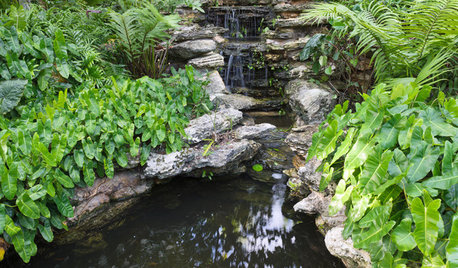
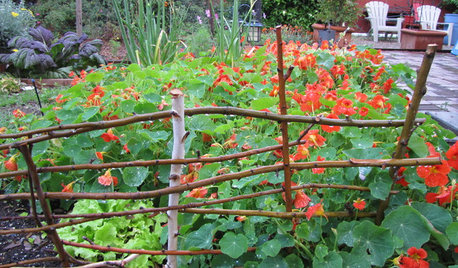



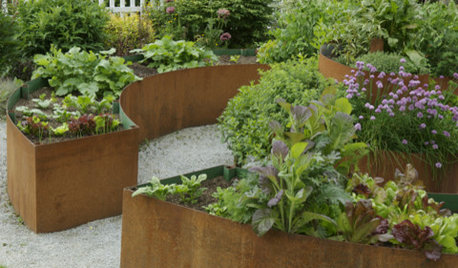
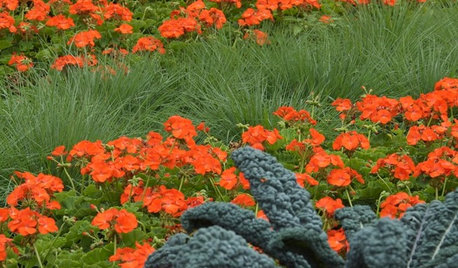
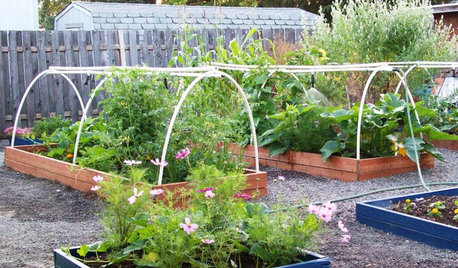
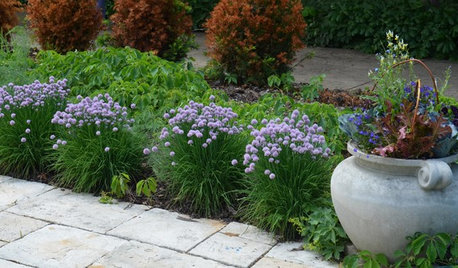





jaynine
lindaruzicka
Related Discussions
Edible Flower Swap?
Q
Herbs & Edible Flowers Swap
Q
NEW: Incredible Edibles: Seed Clean Out Swap
Q
Incredible Edible - June Herbs and Edible Flowers Swap
Q
jaynine
kamiljabloOriginal Author
grovespirit
carroteggs
lindaruzicka
cjcjmass
gardenmom2
jaynine
carolynp
gardenmom2
lindaruzicka
greenthumbgrow
grolikecrazy
cjcjmass
kamiljabloOriginal Author
carroteggs
kamiljabloOriginal Author
grovespirit
kamiljabloOriginal Author
suecirish
lindaruzicka
grovespirit
lindaruzicka
kamiljabloOriginal Author
gardenmom2
grolikecrazy
carolynp
kamiljabloOriginal Author
gardenmom2
kamiljabloOriginal Author
lindaruzicka
kamiljabloOriginal Author
kamiljabloOriginal Author
kamiljabloOriginal Author
jaynine
lindaruzicka
grovespirit
grovespirit
jaynine
lindaruzicka
cjcjmass
carroteggs
grovespirit
cjcjmass
suecirish
carroteggs
gardenmom2
carolynp